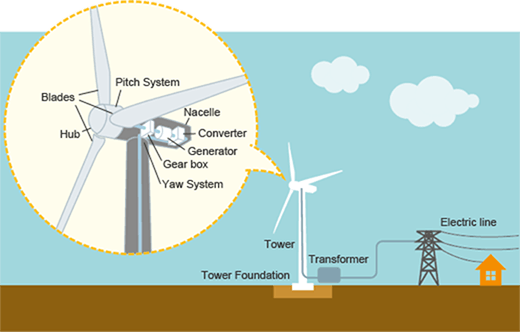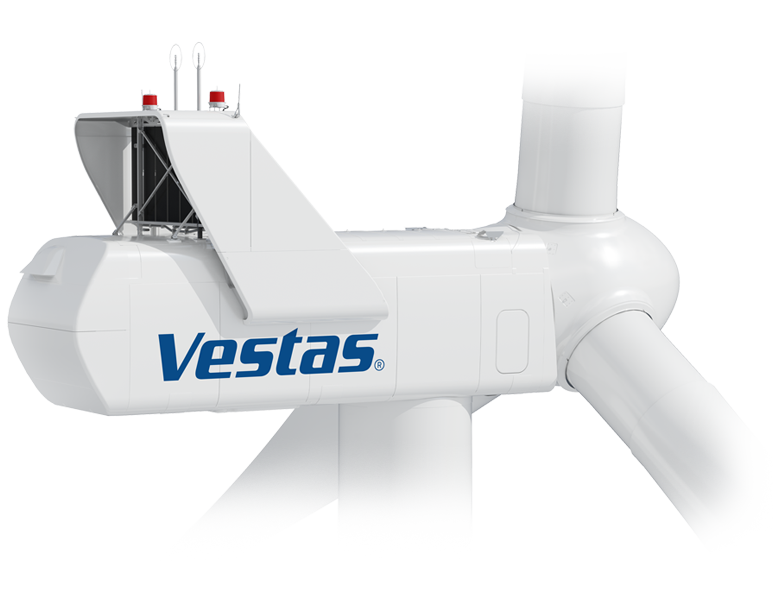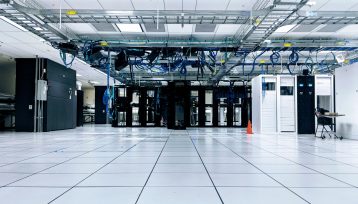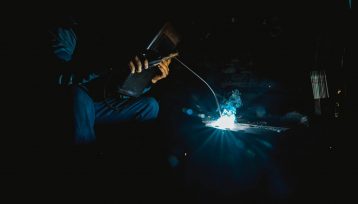Wind power is one of the fastest-growing renewable energy technologies. Usage is on the rise worldwide, in part because costs are falling. Global installed wind-generation capacity onshore and offshore has increased by a factor of almost 75 in the past two decades, jumping from 7.5 gigawatts (GW) in 1997 to some 564 GW by 2018, according to IRENA’s latest data. Production of wind electricity doubled between 2009 and 2013, and in 2016 wind energy accounted for 16% of the electricity generated by renewables. Many parts of the world have strong wind speeds, but the best locations for generating wind power are sometimes remote ones. Offshore wind power offers tremendous potential.
History of Wind Power
Humankind has exploited wind energy ever since records first began; in fact it was harnessed to propel boats along the River Nile as long ago as 5000 BC. Around 200 BC, simple windmills were used to pump water in China, while in Persia and the Middle East there were windmills with a vertical axis and reed sails designed for milling grain.
In the 11th century, new ways of using wind energy spread throughout the world: settlers in the Middle East used windmills extensively for milling grain to produce foodstuffs, and the merchants and crusaders who returned from those lands brought this idea back to Europe. This allowed the inhabitants of the Netherlands to refine the windmill and adapt it to drain the lakes and marshes of the Rhine delta.
One very familiar image in Spain is the famous windmills of Campo de Criptana, which would become so well known in the 17th century thanks to the ingenious gentleman Don Quijote of La Mancha. These emblematic windmills with sails served to pump water or grind grain, and their use was widespread until well into the 19th century. With the start of the industrial revolution, the use of these windmills declined significantly, as from that point on the main sources of energy were steam engines powered by coal and electricity.
When this technology reached North America in the late 18th and early 19th centuries thanks to emigration from Europe, windmills began to be used to pump water in farms and ranches, and subsequently to generate electricity for homes and industry. The second half of the 19th century saw one of the most important advances in wind technology, with the emergence of the popular American multi-blade windmill, which has since served to pump water practically everywhere in the world. Its features would be exploited in subsequent years to design today’s wind turbines.
In 1887, the American scientist Charles F. Brush (March 17, 1849 – June 15, 1929) built what is today known as the first wind turbine for electricity generation. This giant, the largest in the world, had a rotor diameter of 70 m and 144 rotor blades and was made of cedarwood. This generator operated for 20 years and charged the batteries installed in the basement of his home. In spite of its size, the generator produced barely 12 kW of power, as this type of turbine is not particularly efficient.
It was the Danish scientist Poul la Cour (13 April 1846 – 24 April 1908) who later discovered that wind turbines with fewer rotor blades are more efficient for producing electricity that turbines with multiple blades, as the former attain a much greater rotation speed than those of the type built by Brush. In 1899, he designed what can be called the first modern wind generator.
The theoretical bases of the use of wind energy to generate electricity were developed in Germany in the second decade of the 20th century, and are mainly the work of Albert Betz (25 December 1885 – 16 April 1968), a German physicist who in 1919 originated the law that bears his name.
The groundbreaking development in windpower in Europe occurred in Denmark. It gained considerable traction in the first quarter of the 20th century, and contributed to the construction of a decentralized model for the electrification of the country. In 1908 there were 72 wind generators, with a power of between 5 kW and 25 kW.
Elsewhere, on the other side of the Atlantic, windmills were widely used in the 1930s to generate electricity in many farming regions of the United States where distribution systems had yet to be developed. The first turbine with a power of over one MW (1.25 MW, to be exact) was not installed until 1941. Designed by the scientist Palmer Cosslett Putnam (1900-1984) and manufactured by the S. Morgan Smith company, it was installed in the locality of Castleton, Vermont, USA, and operated for 1,000 hours until a failure in one of the blades brought its operation to an end. Turbines generating this much power would not be seen again for over 40 years.
Wind Turbines
Wind power or wind energy is the use of wind to provide mechanical power through wind turbines to turn electric generators for electrical power. It is a popular sustainable, renewable energy source that has a much smaller impact on the environment compared to burning fossil fuels.
The wind farms consist of many individual wind turbines, which are connected to the electric power transmission network. Onshore wind is an inexpensive source of electric power, competitive with, or in many places cheaper than, coal or gas plants. Offshore wind is steadier and stronger than on land and offshore farms have less visual impact, but construction and maintenance costs are significantly higher. Small onshore wind farms can feed some energy into the grid or provide power to isolated off-grid locations.
Modern wind turbines come a variety of sizes but all types generally consist of several main components:
- Rotor Blades – The rotor blades of a wind turbine operate under the same principle as aircraft wings. One side of the blade is curved while the other is flat. The wind flows more quickly along the curved edge, creating a difference in pressure on either side of the blade. The blades are “pushed” by the air in order to equalize the pressure difference, causing the blades to turn.
- Nacelle – The nacelle contains a set of gears and a generator. The turning blades are linked to the generator by the gears. The gears convert the relatively slow blade rotation to the generator rotation speed of approximately 1500 rpm. The generator then converts the rotational energy from the blades into electrical energy.
- Tower – The blades and nacelle are mounted on top of a tower. The tower is constructed to hold the rotor blades off the ground and at an ideal wind speed. Towers are usually between 50-100 m above the surface of the ground or water. Offshore towers are generally fixed to the bottom of the water body, although research is ongoing to develop a tower that floats on the surface.
Wind turbines include critical mechanical components such as turbine blades and rotors, drive train and generators. They cost more than 30% of total capital expenditure for offshore wind project. In general, wind turbines are intended for relatively inaccessible sites placing some constraints on the designs in a number of ways. For offshore environments, the site may be realistically accessed for maintenance once per year. As a result, fault tolerance of the wind turbine is of importance for wind farm development.
One of key components in the wind turbine is its drive train, which links aerodynamic rotor and electrical output terminals. Optimization of wind turbine generators cannot be realized without considering mechanical, structural, hydraulic and magnetic performance of the drive train. Generally, they can be broken down into four types according to their structures:
- Conventional: gearbox and high-speed generator with few pole pairs.
- Direct drive: any drive train without a gearbox and low speed generator with many pole pairs.
- Hybrid: any drive train with a gearbox and the generator speed between the above two types.
- Multiple generators: any drive train with more than one generator.
Drive train topologies may raise the issues such as the integration of the rotor and gearbox/bearings, the isolation of gear and generator shafts from mechanical bending loads, the integrity and load paths. Although it may be easier to service separate wind turbine components such as gearboxes, bearings and generators, the industry is increasingly in favor of system design of the integrated drive train components.
One of limiting factors in wind turbines lies in their generator technology. There is no consensus among academics and industry on the best wind turbine generator technology. Traditionally, there are three main types of wind turbine generators which can be considered for the various wind turbine systems, these being direct current (DC), alternating current (AC) synchronous and AC asynchronous generators. In principle, each can be run at fixed or variable speed. Due to the fluctuating nature of wind power, it is advantageous to operate the wind turbine generators at variable speed which reduces the physical stress on the turbine blades and drive train, and which improves system aerodynamic efficiency and torque transient behaviors.
In conventional DC machines, the field is on the stator and the armature is on the rotor. The stator comprises a number of poles which are excited either by permanent magnets or by DC field windings. If the machine is electrically excited, it tends to follow the shunt wound DC generator concept.
Wind power is an intermittent energy source, which cannot be dispatched on demand. Locally, it gives variable power, which is consistent from year to year but varies greatly over shorter time scales. Therefore, it must be used with other power sources to give a reliable supply.
Power-management techniques such as having dispatchable power sources (often gas-fired power plant or hydroelectric power), excess capacity, geographically distributed turbines, exporting and importing power to neighboring areas, grid storage, reducing demand when wind production is low, and curtailing occasional excess wind power, are used to overcome these problems. As the proportion of wind power in a region increases, more conventional power sources are needed to back it up, and the grid may need to be upgraded. Weather forecasting permits the electric-power network to be readied for the predictable variations in production that occur.
Wind is used to produce electricity using the kinetic energy created by air in motion. This is transformed into electrical energy using wind turbines or wind energy conversion systems. Wind first hits a turbine’s blades, causing them to rotate and turn the turbine connected to them. That changes the kinetic energy to rotational energy, by moving a shaft which is connected to a generator, and thereby producing electrical energy through electromagnetism.
The amount of power that can be harvested from wind depends on the size of the turbine and the length of its blades. The output is proportional to the dimensions of the rotor and to the cube of the wind speed. Theoretically, when wind speed doubles, wind power potential increases by a factor of eight.
Wind-turbine capacity has increased over time. In 1985, typical turbines had a rated capacity of 0.05 megawatts (MW) and a rotor diameter of 15 metres. Today’s new wind power projects have turbine capacities of about 2 MW onshore and 3–5 MW offshore.
Commercially available wind turbines have reached 8 MW capacity, with rotor diameters of up to 164 metres. The average capacity of wind turbines increased from 1.6 MW in 2009 to 2 MW in 2014.
Power Semiconductors Used in Wind Power
In today’s power grids a greater degree of sophistication is required to ensure that stable, reliable power is delivered on demand despite the intermittent nature of the renewable energy sources, such as wind. To facilitate the new demands placed on the power grid, power semiconductor technologies are used.
High power semiconductors are key components to control the power generation and connection of the network from renewable energy sources such as wind turbines. To achieve highest efficiency of the energy source it is essential to select the right device for the given conditions. The semiconductors are used for two main tasks in the chain of renewable energy sources, one is the conversion of power in the plant, such as in wind turbines, and second is the transmission of power to the grid. As example, on an offshore wind farm the produced energy is converted up to four times by means of power semiconductors before it enters the distribution network.
Depending on the system and design, we can find thyristors, IGBT modules, Press-Pack IGBTs, and even IGCTs in wind power application.
Owing to the high outputs of today’s wind turbines (over 2 MW), water cooling of the IGBT modules is common. One particular challenge for power semiconductors is the need to cope with a grid fault for a specified period of time (Fault Ride Through), a feature demanded from wind turbines by network operators. In wind turbines with doubly-fed asynchronous generators in particular, the IGBTs and freewheeling diodes must be able to cope with high peaks in current and voltage in such instances.
Major power semiconductors manufacturers offer their solutions specially for wind power application. Among them:
Besides the silicon devices, wide bandgap semiconductors, especially silicon carbide, are now actively being implemented in the power equipment of wind energy applications.
Major Players in Wind Power
Currently, Asia-Pacific is the largest wind turbine market in terms of cumulative installed wind power capacity with nearly 50% share in 2019, followed by Europe and North America with a share of 33% and 20%, respectively. South and Central America and the Middle East and Africa had small shares of less than 3% each in the same year. China nowadays represents over 43% of world’s total wind energy capacity, with the addition of over 20GW per annual. The US had the second-largest annual installed capacity after China with a share of 15% in 2019.
The top 10 wind turbine manufacturers continue to dominate the global wind energy market in 2020 due to their significant wind power capacity installations over the recent years. According to the The latest data from BloombergNEF (BNEF), Denmark based wind turbine company Vestas remained the world’s largest wind turbine manufacturer and supplier in 2020, thanks to its wide geographic diversification strategy and strong performance in the U.S. market.
As wind power continues to be one of the most commonly used renewable energy sources in the global market, these top 10 wind turbine suppliers are expected to further strengthen their market dominance by intensively investing on R&D in terms of product innovation, efficiency, and management software etc.
Wind power would supply more than one-third of total electricity demand by 2050 and is well aligned with energy transformation scenarios of various institutions, clearly highlighting the importance of scaling up the wind power generation share in order to decarbonise the energy system in the next three decades.
Find out more about power semiconductors applications in the special section of the website.
If you prefer a monthly update about the world of power semiconductors delivered to your e-mail address, please, subscribe to Marketing Psycho Power Semiconductors newsletter.









